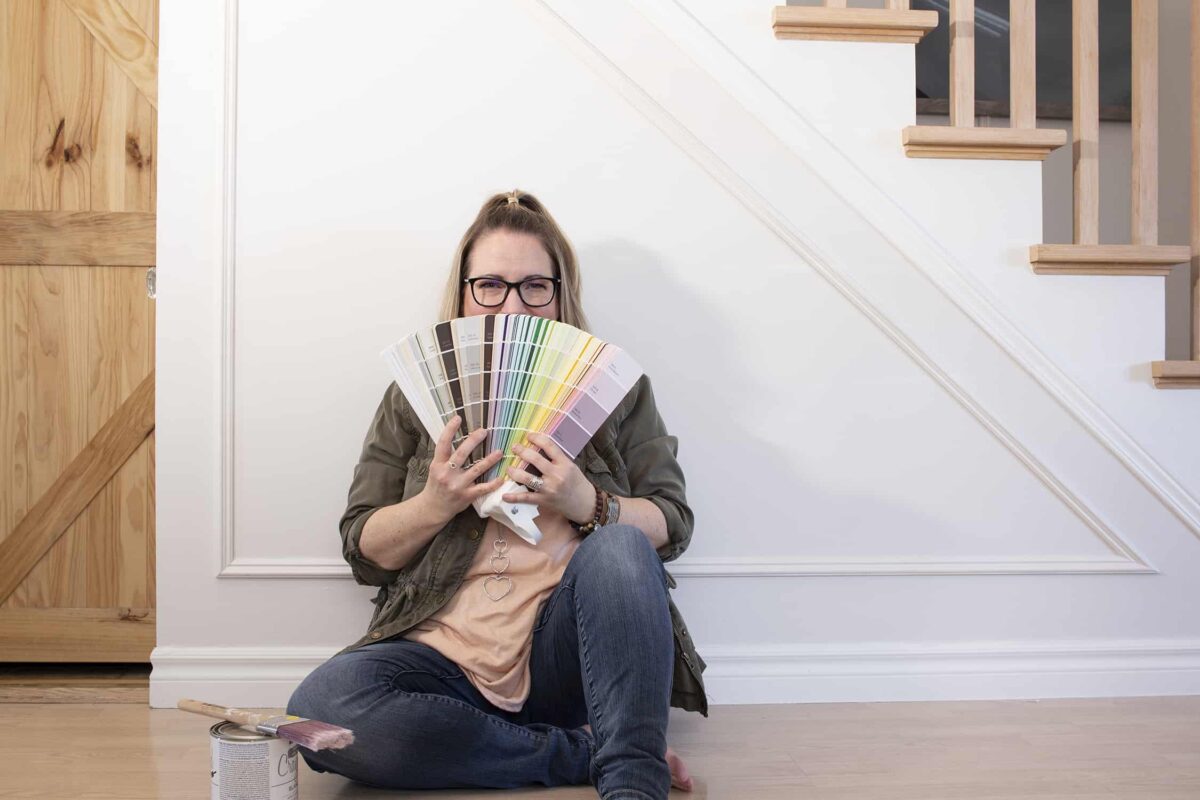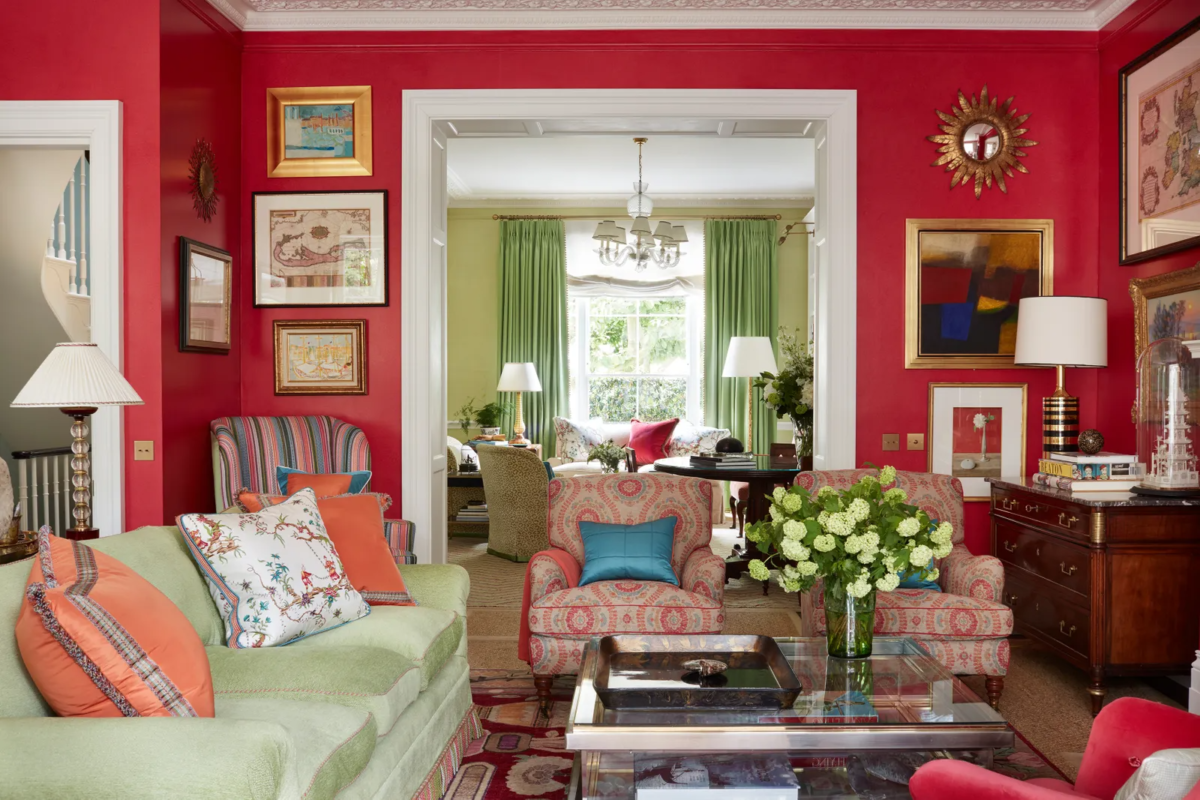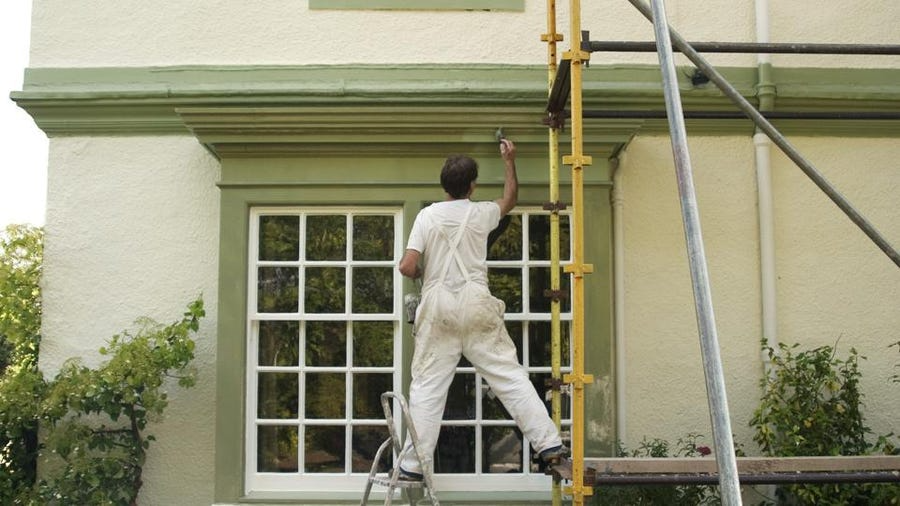How to Choose the Right Paint for Your Home

Choosing the appropriate paint for your project might be difficult, but it does not have to be. You can select the best option for your home with a little bit of education and understanding of the various types of paint available. In this blog post, we’ll explain how to choose the right paint for your home.
Table of Contents
Find Out How to Choose the Right Paint for Your Home

The type of surface you will be painting is one of the most significant factors to consider when selecting paint. Paint is created for specific surfaces such as walls, ceilings, wood, metal, and masonry. Oil-based paint, for example, is ideal for wood surfaces, whilst latex paint is better suited for walls and ceilings.
How To Choose Interior Paint Colors

Another critical consideration is the type of finish you desire for your project. Flat to high gloss paint treatments are available, with varying levels of durability and luster. A flat finish, for example, is ideal for masking flaws in a wall, but a high gloss finish is ideal for bringing a sense of elegance to a room.
When it comes to the how to choose the right paint for your home, it’s critical to select a shade that you enjoy. Remember that paint colors might appear differently in different lighting, so test the color in the room where it will be used. There are several types of different paints made with different chemicals. Let’s look at some of the main paint types for interior house painting.
If you want an expert’s advice, contact us to get the best answer to the “How to choose the right paint for your home” question.
What Are the 3 Main Types of Paint for Interior?

Choosing the right interior paint is a big part of the “How to Choose the Right Paint for Your Home” question. There are numerous paint varieties to pick from when it comes to interior painting. Each type of paint has distinct features and characteristics that make it better suited to specific surfaces and uses. In this section, we’ll look at the three primary types of paint for interior walls and analyze their benefits and drawbacks. Understanding the many types of paint available will help you make an informed selection and achieve the ideal look for your home, whether you’re intending to paint your living room, bedroom, or kitchen.
Flat Interior Paint
Flat paint, often known as matte paint, is a smooth-finishing paint with a low sheen. It is commonly used on interior walls and ceilings and is noted for its ability to conceal surface defects. Flat paint is also less reflective than other varieties of paint, making it an excellent choice for spaces with limited natural light. It is also commonly utilized in high-traffic areas since it is more resilient and stain resistant. However, it is more difficult to clean than eggshell, semi-gloss, or gloss paint.
Eggshell Interior Paint
Eggshell paint has a subtle gloss to it, similar to the finish of an eggshell. It is a low-luster finish that falls between flat and satin paint. It is popular for interior walls and woodwork because of its delicate shine, which helps to reflect light and make rooms appear brighter. It is also more durable than flat paint, withstanding light cleaning and scouring without leaving marks. Because it is more resistant to mildew and stains, eggshell paint is also a suitable choice for places prone to moisture, such as bathrooms and kitchens.
Gloss Interior Paint
Gloss paint is a form of paint with a high shine and a smooth, shiny surface. It is commonly used on surfaces that are in good condition and only need minor touch-ups, such as woodwork, doors, trim, and baseboards. Gloss paint is also typically used on surfaces that require frequent cleaning, such as kitchen cabinets, because it is simple to wipe down and keep clean. However, the high gloss finish might expose defects and faults in the surface, thus adequate preparation is required before painting. It’s also not ideal for walls because it might cause glare and is difficult to touch up.
What Are the 3 Main Types of Paint for Exterior?

When it comes to painting the outside of your home, choosing the appropriate type of paint is critical to ensuring that it will resist the elements and look good for years to come. With so many options available, deciding which paint is ideal for your unique needs can be difficult. Exterior paint also gets involved when you want to find out “How to Choose the Right Paint for Your Home”.
In this section, we’ll look at the three basic varieties of exterior paint and explore their distinct qualities, benefits, and applications. Understanding the many types of paint available will help you make an informed decision and create the desired look for your property, whether you’re intending to paint your house, fence, or deck.
Acrylic Exterior Paint
Acrylic exterior paint is a type of paint designed specifically for use on exterior surfaces. It is created with water-based acrylic resins that give great durability and resistance to fading, chalking, and cracking. The acrylic exterior paint, unlike oil-based paints, dries quickly and has no noticeable odor. It also contains fewer volatile organic compounds (VOCs), making it a more environmentally friendly choice.
Acrylic exterior paint can be used on a wide range of surfaces when it comes to exterior painting, including wood, brick, stucco, and metal. It can be utilized in a wide variety of temperatures and can be applied to both new and previously painted surfaces. It also has strong flexibility and elongation capabilities, which make it resistant to cracking and peeling, and it lets the surface to expand and contract with temperature changes.
It’s also a wonderful choice for external surfaces exposed to direct sunshine or extreme weather, as it resists fading and yellowing. It’s also waterproof and resistant to severe rain and humidity, making it ideal for coastal environments.
Latex Exterior Paint
Latex exterior paint is a type of paint that is designed for use on outside surfaces. It’s produced with a water-based latex binder, which means it’s long-lasting and resistant to fading, chalking, and cracking. Latex exterior paint is also well-known for its simplicity of application and cleanup, as it is easily washed with soap and water. It also dries rapidly and has a low odor, making it a more handy solution for households.
Latex exterior paint is appropriate for a wide range of materials, including wood, brick, stucco, and metal. It can be utilized in a wide variety of temperatures and can be applied to both new and previously painted surfaces. It also has strong flexibility and elongation capabilities, which make it resistant to cracking and peeling, and it lets the surface to expand and contract with temperature changes.
It’s also a wonderful choice for external surfaces exposed to direct sunshine or extreme weather, as it resists fading and yellowing. It’s also waterproof and resistant to severe rain and humidity, making it ideal for coastal environments. It also contains fewer VOCs, making it more environmentally friendly.
Oil-Based Exterior Paint
The oil-based exterior paint, commonly known as alkyd paint, is a type of paint with an oil-based binder. It is well-known for its long life and resistance to fading, chalking, and cracking. The smooth and durable finish of oil-based exterior paint is also well-known. It is especially effective for outside surfaces exposed to direct sunshine and adverse weather conditions since it resists fading and discoloration. It also has a level of waterproofing and can withstand strong rain and humidity, making it excellent for coastal settings.
The strong stench of oil-based paint is one of its key qualities, which might be a detriment to certain homeowners. It also takes longer to cure and requires mineral spirits or paint thinner to clear off. It also contains a lot of VOCs, which are bad for the environment and the people who use it. It is typically applied to surfaces that are in good condition and only require minor touch-ups, such as woodwork, doors, trim, and baseboards.
It’s also not recommended for use over latex paint or on surfaces that have previously been painted with water-based paint. It is also unsuitable for high-moisture environments such as bathrooms or kitchens.
Conclusion: How to Choose the Right Paint for Your Home

By taking these factors into consideration, you can choose the perfect paint for your project and ensure that your home looks beautiful for years to come.
Don’t let choosing the correct paint for your project overwhelm you. Use the advice in this article to make an informed selection and get the style you want for your house. Hopefully, you were able to find the answer to the “How to choose the right paint for your home?” question in this blog post.
If you have any questions or require additional assistance, please contact us for professional advice and assistance with your next painting project.
